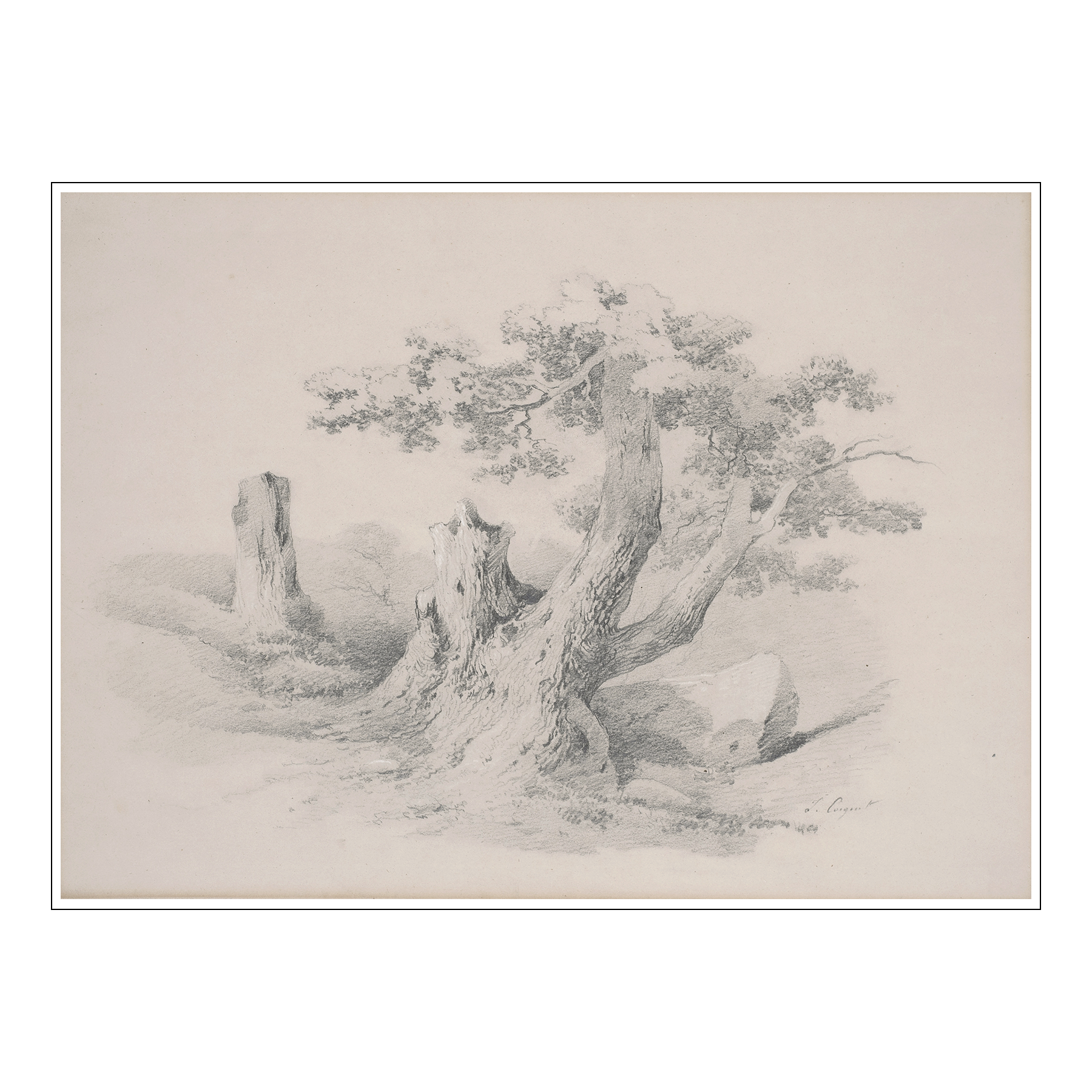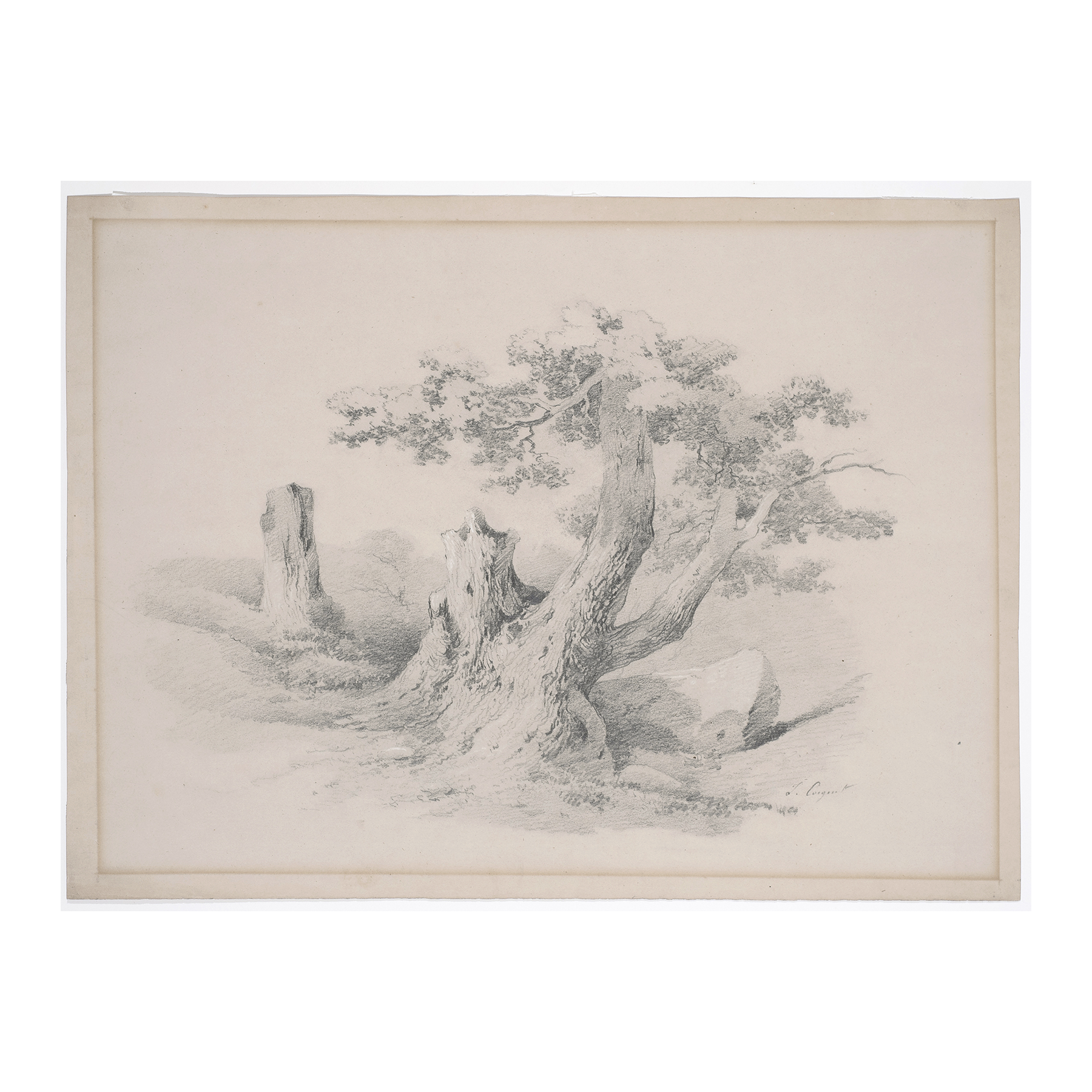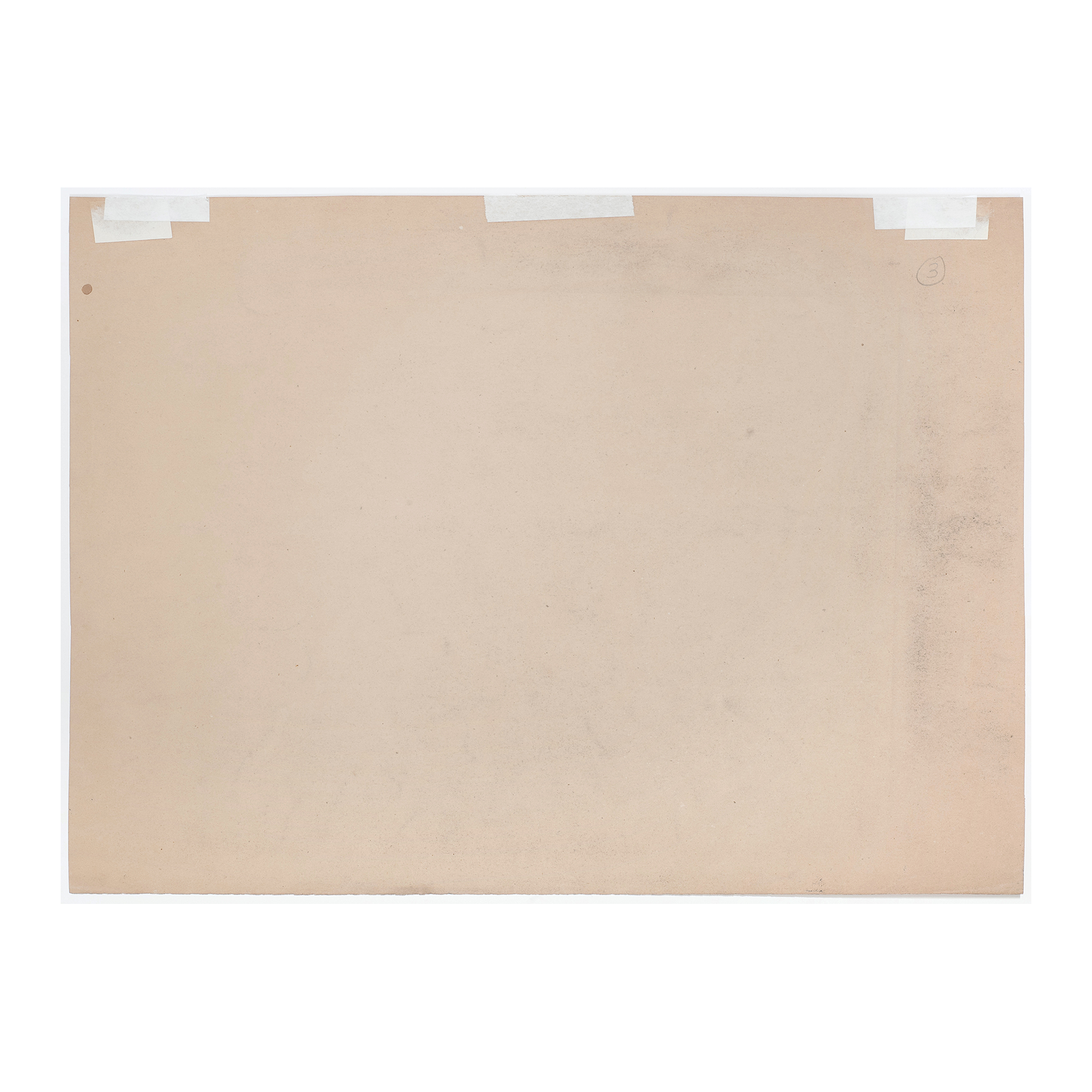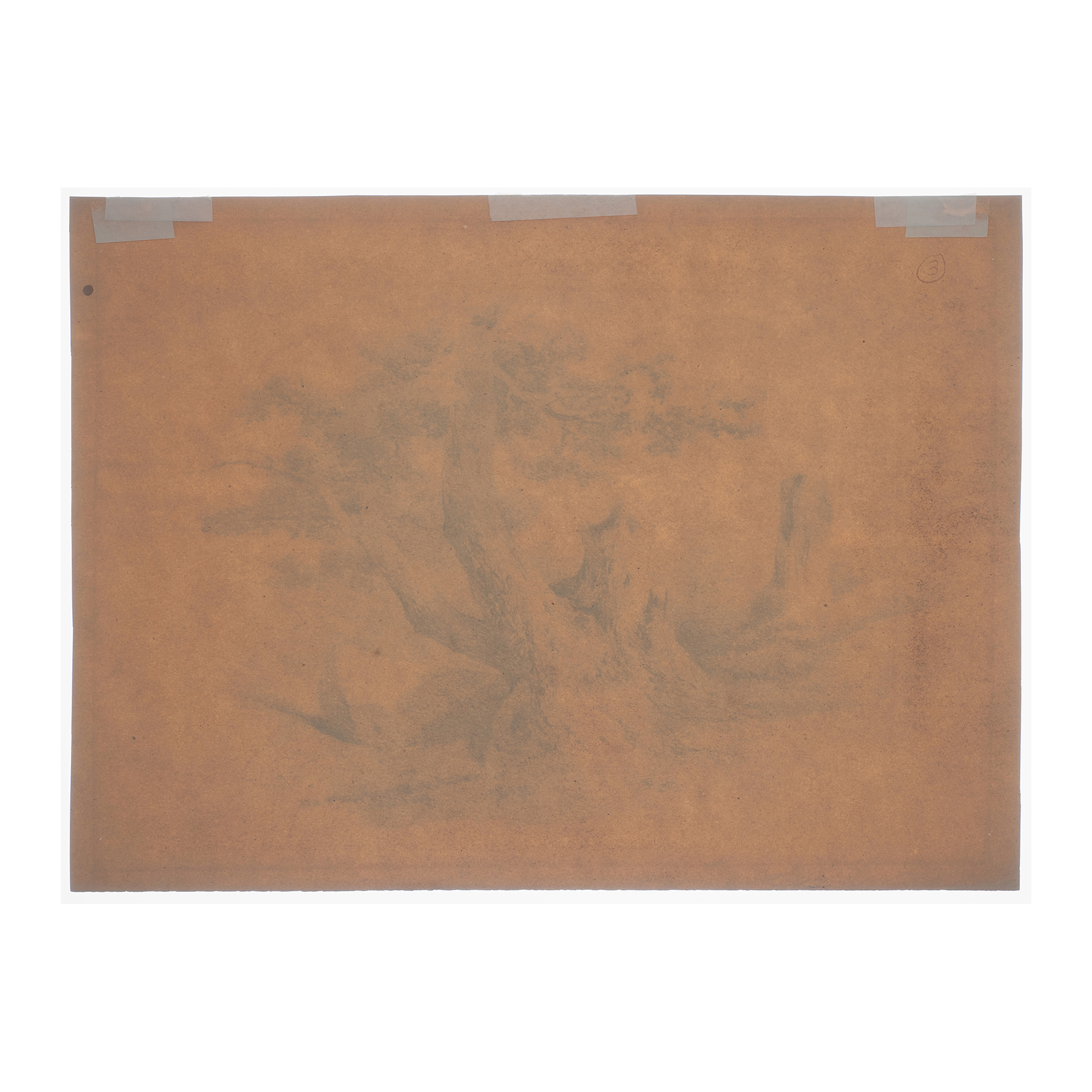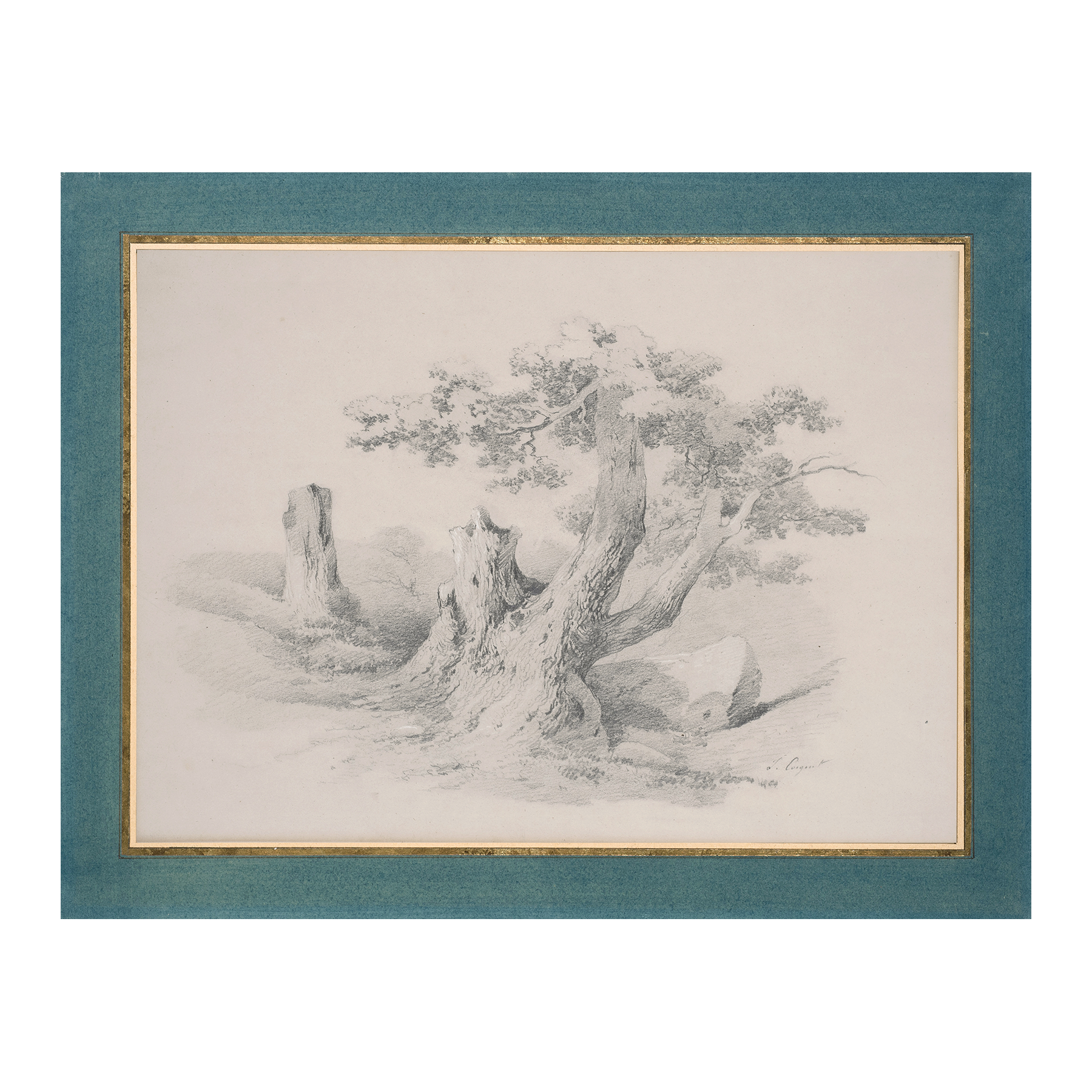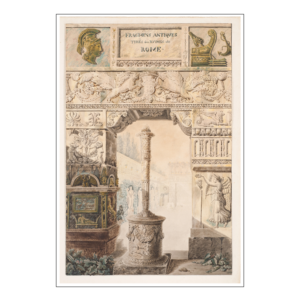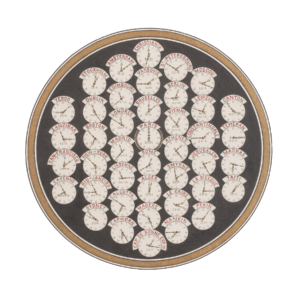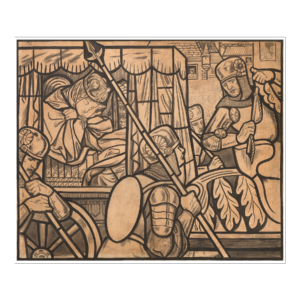Jules Coignet
Paris 1798 – 1860
Study of a tree
Pencil.
Signed lower right : J. Coignet.
280 x 360 mm – 11 1/32 x 14 3/16 in.
Jules Coignet was trained in historical landscape by Jean Victor Bertin, but he began to paint from the motif in the forest of Fontainebleau, in Barbizon, as early as 1819. During his first trip to Italy, he freed himself from the principles of historical landscape, and he spent time painting landscapes in situ instead of composing them in his studio and carefully focused on topography and light effects. From his many travels in France but also across Europe (Switzerland and Germany) and Orient (Greece, Turkey, and Egypt), he brought back numerous drawn studies from which he published illustration books. The first of them, Vues pittoresques d’Italie, was published in 1825.
In 1831, Jules Coignet opened his studio and, as an educational complement, he decided to publish his plein-air drawings in two books: Principes et Études de paysages [Principles and Landscape Studies] in 1831 and Le Paysagiste. Cours complet de paysage [The Paysagist. A complete landscape drawing course] in 1833, which gathers one hundred lithographs after his drawings. This study of a tree is probably preparatory for such a project, in the same way as lithographs were made after his drawings in the Musée Louis Senlecq de l’Isle Adam, Chestnut tree (inv. 2011.0.1236) and Walnut tree (inv. 2011.0.1235). Drawing this old tree in a romantic mood and focusing on its roots and trunk bending under the weight of years and bad weather, Coignet turned his study into the real portrait of a tree.
Condition report – paper slightly faded. Traces of a former mount.
